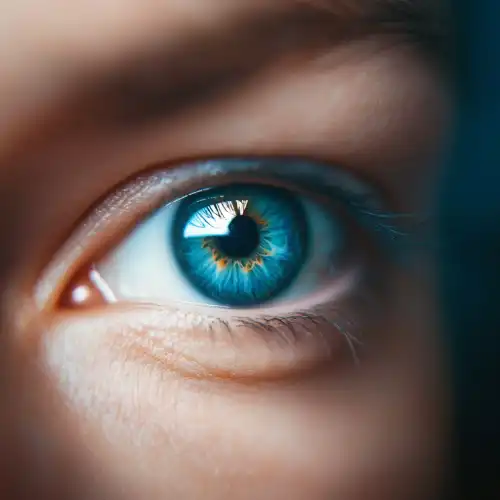Your pupils are the black dots in the middle of your eyes which allow light to enter. Around the pupil is the iris, which controls the opening of the pupil. Pupil dilation happens when any one of the two muscle groups — iris sphincter or iris dilator becomes activated. Pupils change in size to focus on distance. They also change in size as a response to light. Emotions can also cause dilation or chemical changes in the body.
Mydriasis Is the Name for Dilated Pupils
Dilated pupils (Mydriasis) can also be a sign of drug abuse. This is often referred to as ‘blown pupils’ where the pupils stay excessively large even in a bright light environment.
Dilated pupils might offer important hints about a person’s drug use when it comes to abuse. Some medications have the potential to cause mydriasis, which results in blown pupils. These drugs have an effect on the autonomic nervous system and the muscles that regulate pupil size, which results in this physiological reaction.
Dilated pupils are a common side effect of stimulant substances such cocaine, methamphetamine, cocaine, and amphetamines. These chemicals cause a rise in arousal and alertness by increasing the release of neurotransmitters like dopamine and norepinephrine and decreasing their reuptake. As a result, pupils enlarge and are unable to properly contract in reaction to light.
Hallucinogens like LSD, psilocybin mushrooms, and MDMA (ecstasy) are another category of drugs that can result in blown pupils. By interacting with serotonin receptors in the brain, these drugs change perception and cognition. One of the various affects these medicines have on a user’s sensory perception is pupil dilation.
Additionally, dilated pupils may occur as a side effect from several pharmaceutical drugs. Methylphenidate and dextroamphetamine, two medications used to treat attention deficit hyperactivity disorder (ADHD), can cause dilated pupils if misused or used in larger dosages than recommended.
It’s crucial to remember that dilated pupils do not always signify drug misuse. Intense physical effort, certain medical disorders, or even normal responses to emotional states can all cause mydriasis. Therefore, it is essential to take into account additional symptoms in addition to dilated pupils to arrive at a more precise diagnosis of suspected drug misuse.
It’s important to address the situation with empathy and provide help if you think someone may be battling with drug abuse because they have dilated pupils and other alarming symptoms. For someone struggling with substance misuse, encouraging open communication and giving them access to options for addiction treatment can make a big difference.
Pupil dilation may be an indicator of stimulant drug usage. These drugs can cause pupil dilation:
- Amphetamines (Speed)
- Benzodiazepines (Benzos)
- Cocaine
- Ecstasy (MDMA)
- Ketamine
- LSD
- Mescaline
- Most hallucinogens
- PCP
- Shrooms (magic mushrooms)
Dilation of this kind is temporary as the pupil returns to normal as soon as the effect of the drugs wear off.
Xanax is a benzodiazepine drug that can also cause pupils to dilate. This is because they affect the activity of the neurotransmitter GABA, which has a muscle-relaxing effect. ADHD medications, such as Ritalin and Adderall are stimulant medications like that can also cause dilated pupils.
How cannabis effects the pupil is controversial. For some there might be increase in the pupil size, whereas the reported enlargement in certain other cases may be so less that it might not be visible to the naked eye. Also, infection in the conjunctivitis is a common side effect of smoking cannabis. Cocaine intake can also cause short term dilation of the pupils. In fact, even moderate doses can lead to pupil dilation.
Miosis Is the Name for Constricted Pupils
Opiates have a totally different effect on the pupil and cause pupil constriction or miosis (often called “pin-point pupils”). However, withdrawal from opiates may resulted in dilated pupils.
The Role of Eye Exams in Detecting Drug Use
While dilated pupils can be a telltale sign of drug use, it’s crucial to understand that routine eye exams can play a pivotal role in detecting substance abuse. Optometrists and ophthalmologists are trained to spot subtle changes in eye health that might indicate drug use. For instance, they can detect:
- Bloodshot eyes from cannabis use
- Yellowing of the eyes (jaundice) from alcohol abuse
- Damage to blood vessels from stimulant use
- Changes in eye pressure from steroid abuse
These professionals can also notice behavioural signs during an exam, such as difficulty focusing or unusual eye movements. However, it’s important to remember that these signs aren’t definitive proof of drug use. They’re simply red flags that might warrant further investigation or discussion with a healthcare provider.
Regular eye exams aren’t just about updating your prescription – they’re a window into your overall health, including potential substance abuse issues. If you’re concerned about a loved one’s drug use, encouraging them to get a comprehensive eye exam could be a subtle yet effective first step.
The role of parents plays a significant part in preventing drug use in adolescents. If your child is experimenting with drugs or alcohol, they may try to hide some of the signs from you, but their eyes can often give away what they are doing.
As early as the problem is addressed, more is the chance of avoiding potential damage. These are the aspects that can even cause teenagers to get dilated pupils due to drug intake. Tackling the issue with research and understanding is crucial to combat overly permissive or overly aggressive attitude towards the addict.
Photo by Anthony Cunningham for Zoom Testing
Zoom Testing is a leading UK drug testing company and a supplier of Drug Test Kits.
This post was originally published in 2018. It was last updated in January 2025.





